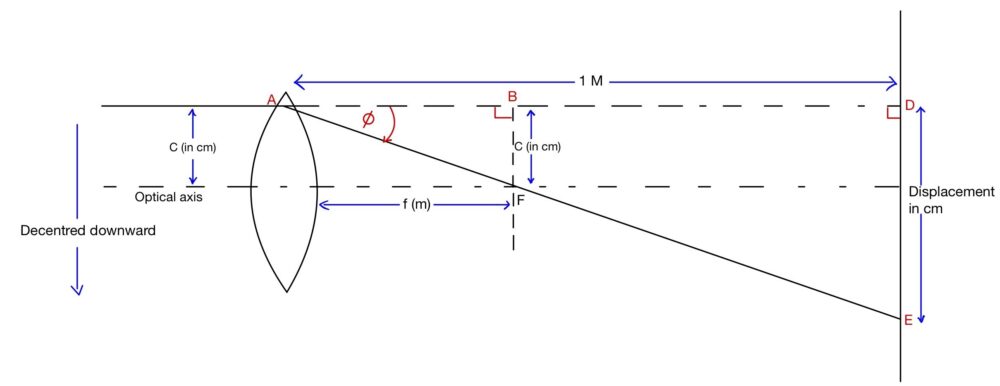Prism power
7.PRISMSPrism power is the amount of light displaced in centimetres at a distance of 1m away from the prism or lens. Prism power is denoted by Δ
Δ = Image displacement in centimetre / 1 Meter
Suppose a plus lens is decentred downward. The parallel ray instead of passing through the optical centre now passes through a point (A) which is above to optical centre. After passing through lens point A, the ray bends towards the optical axis and meets the optical axis at point F, which is the focal point of the lens and f meter away from the lens. A screen is placed 1m far away from the lens to know how much displacement of image (cm) is produced by a decentred plus lens.
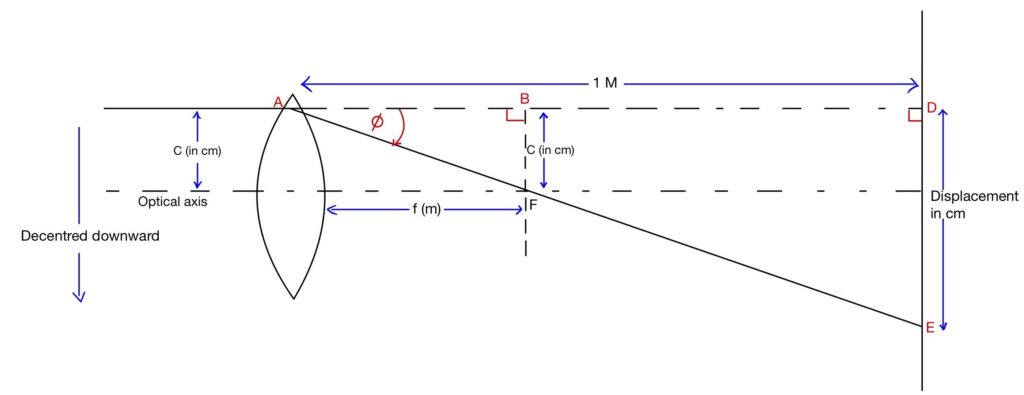
In triangle ABF
As it is right angle triangle
Therefore tan Ø = FB / AB
tan Ø = c (in cm) / f (m)
where c is the decentration of the lens in cm
and f is the focal length of the lens in meter
In triangle ADE
As it is right angle triangle
tan Ø = DE / AD
tan Ø = Image displacement in centimetres / 1 Meter
As both triangles have similar angles Ø
Therefore we can say:
c (in cm) / f (m) = Image displacement in centimetre / 1 Meter
The right side value can be replaced by Δ (because we know Prism power is the amount of light displaced in centimetres at a distance 1m away from the prism or lens).
c (in cm) / f (m) = Δ
This formula is further simplified as
Δ = cF ( Focal power = 1 / focal length)
Δ = cF
Where Δ is the amount of prism power induced by a decentred lens.
c decentration of the lens from the optical centre in cm.
F is the Focal power of the lens in dioptre.
Prism Base direction with decentration.
Prism base direction depends on two factors one is the direction of decentration and the other is whether the lens is convex (+) or concave (-).
A Plus lens can be considered as a combination of two base to base prism.

So if a plus lens is decentred downward, so the eye will be seeing through a point which is above the optical centre and there will be a base down prism created in front of the eye.

If a plus lens is decentred upward, so the eye will be seeing through a point which is below the optical centre and there will be a base up prism created in front of the eye.

If a plus lens is decentred outward (away from the nose), so the eye will be seeing through a point which is Nasal to the optical centre and there will be a base out prism created in front of the eye.
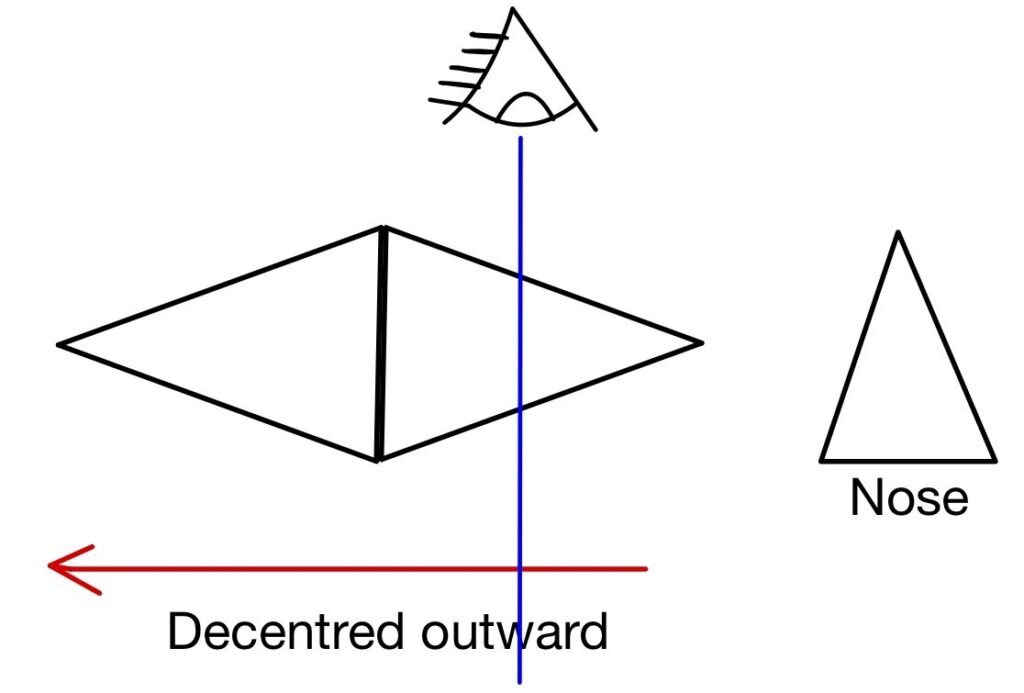
If a plus lens is decentred inward (towards the nose), so the eye will be seeing through a point which is temporal to the optical centre and there will be a base in prism created in front of the eye.

A Minus lens can be considered as the combination of two apex to apex prism.

So if a Minus lens is decentred downward, so the eye will be seeing through a point which is above the optical centre and there will be a base up prism created in front of eye.
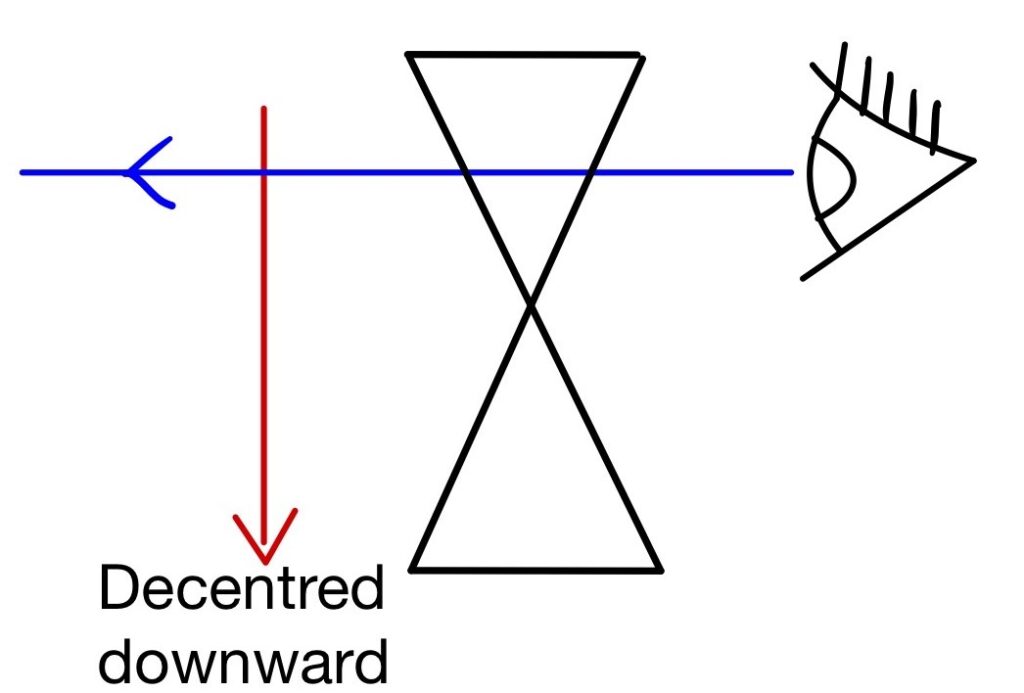
If a Minus lens is decentred upward, so the eye will be seeing through a point which is below the optical centre and there will be a base down prism created in front of the eye.

If a Minus lens is decentred outward (away from the nose), so the eye will be seeing through a point which is Nasal to the optical centre and there will be a base in prism created in front of the eye.

If a Minus lens is decentred inward (towards the nose), so the eye will be seeing through a point which is temporal to the optical centre and there will be a base out prism created in front of the eye.

Simple way if you want to remember the base direction for spherical lens decentration
If the lens is plus then the induced base direction will towards lens decentration
For example, if decentration is out then the induced base direction prism will be also Base out
If the lens is Minus then the induced base direction will be opposite to lens decentration
For example, if decentration is out then the induced base direction prism will be Base in
For example:
If a lens having a power of +3.00 D is decentered 5 mm outward from the center of the eye, how much prismatic effect and what base direction will this cause?
Ans: The amount of prismatic effect induced will be given by
Δ = cF
Given: F = +3.00 D
c = 5 mm we need to convert it to cm
c = 0.5 cm
Δ = 0.5 x 3 = 1.5 Δ
Base direction as it is a plus lens and decentred outward, so the eye will be seeing through a point which is Nasal to the optical centre and there will be a base out prism created in front of eye.
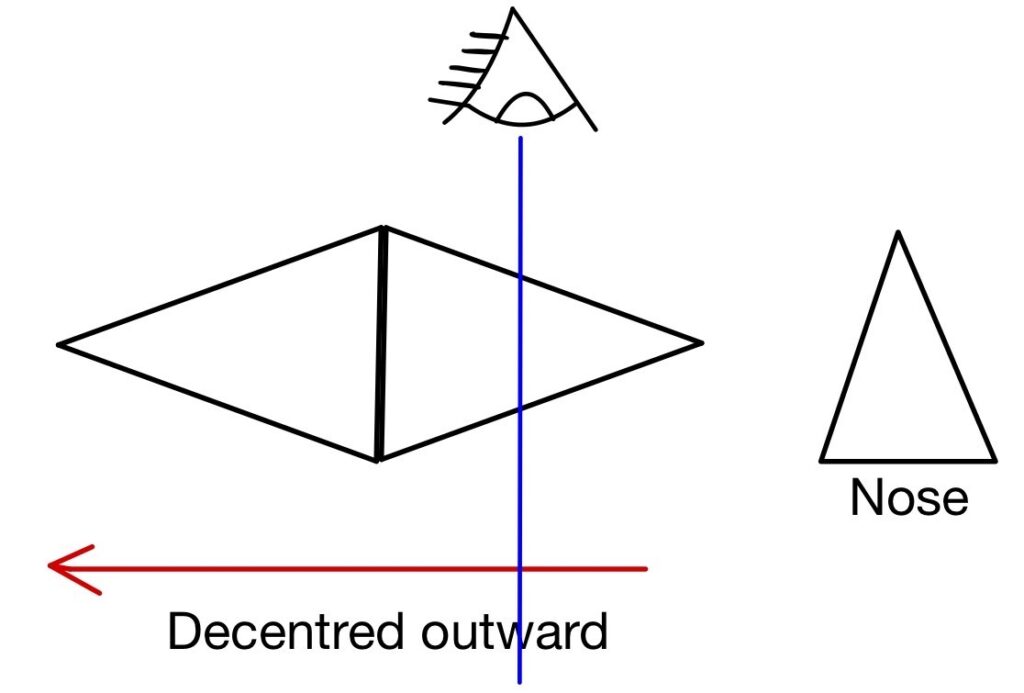
Final answer = 1.5 Δ Base out
Use below link for online calculation of prismatic effect induced by lens decentration
Lecturer (Nethradhama School of Optometry)
Moptom

